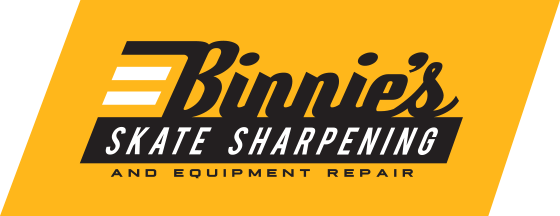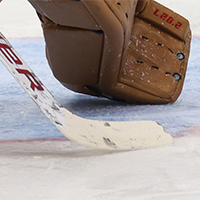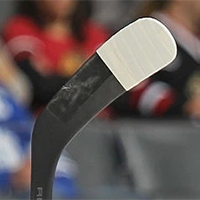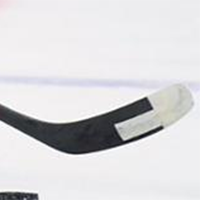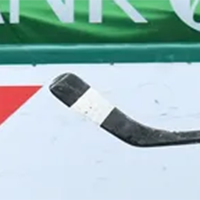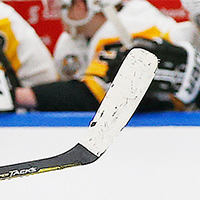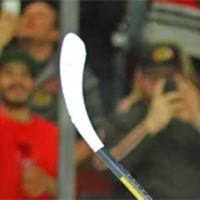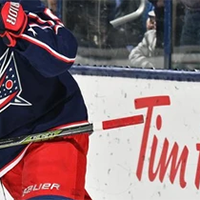Pro's Corner: Tape Basics
Back in the day, when hockey sticks were made of wood, the tradition of taping a hockey stick was much more of a necessity. Tape protected the blade from chipping and the brutal effects of ice, slush, water, and changing temperatures. An added benefit was increase in puck feel and handling. Tot his day hockey players tape their sticks for many of the same reasons.
WHICH TAPE IS BEST?
The most common tape is cloth hockey tape. This tape is made of either cotton or synthetic fibers and is only tacky on one side. This tape provides a great level of stick protection and, on its own, a reasonable addition to puck handling. This tape can be used on the blade, butt end as a grip, and even candy cane wrapped around the shaft. The added benefit is that this tape comes in a variety of widths, colors, and patterns to match any player’s style.
For the butt end of the stick, some players choose to use a soft grip tape. Sold under a variety of names, this is a stretchy, soft, self-adhesive tape usually used as a top layer over a traditional butt end tape job. It provides a soft feel with significant tackiness to make sure the stick never slips out of your hand. If you can’t find it at your local shop, check the first aid or athletic training support areas of you local big box or pharmacy store.
For the old-school players, friction tape is still an option, although you may only find it in your local hardware store. This tape is often more narrow than traditional cloth tape, is tacky on both sides, and has just a little bit of stretch to it. Before trying this option, though, please check with your local rink if it is allowed as it can leave a residue on pucks that will then transfer to the boards.
HOW TO TAPE A BLADE
How to tape a hockey stick blade is really to preference. Some people will say toe to heel. Some say heel to toe. Some say you tape the whole thing; some only tape a small part. Your choice of width of tape and how much to over lap is up to you. Some say the more you overlap, the softer the feel of the puck, but if you overlap too much (or are one of those people that doesn’t take the old tape off) you can make the blade so dead you can’t feel or control the puck either. The most basic tape job is to wrap the blade in the main center portion about an inch from the toe and an inch from the heel with about a 1/3-1/2 overlap of each tape layer. You can always adjust your tape style from there. Heavy toe dragger? Wrap it all the way to and around the toe. Only need some help in the middle or like to use your backhand? Maybe you only need a small area in the sweet spot.
Tape color has long been a debate in locker rooms around the globe. The old story was that black tape hid the puck better from goalies and defenders. White tape, while also easier for opponents to see, was supposedly better for you and your teammates to see the puck. In the end, there is no real benefit to either color, or any other color for that matter. So, unless you play in a league with rules about tape color, go with what color makes you feel comfortable, confident, and happy.
For those not a fan of taping your sticks too often, there are alternatives on the market. These sticky pads made of a variety of different materials and textures tack right onto the blade. It makes it easy to change, they are supposedly more durable than traditional tape, and reduces the need to wax your stick. While more expensive than tape on initial cost, if it works for you it may save some money in the long run.
Need some inspiration? Take a look at these professional tape jobs from past and present players.
Andre Vasilevskiy
The Full Blade
Marc-Andre Fleury
The Ankle Sock
Mitch Marner
The Traditional
Artemi Panarin
Just the Tip
Evengi Malkin
The Full Sock
Tim Stutzle
The Tip+
Bobby Orr
The One Bar Minimalist
Jamie Benn
The Middle Third
Nathan MacKinnon
The Full Sock
Connor McDavid
The Full Sock
Kevin Fiala
The Horizontal Minimalist
Patrick Sharp
The Tube Sock
David Patrnak
The Three Bar Just Enough
Sidney Crosby
The Traditional
Tom Barrasso
The Tube Sock
HOW TO TAPE THE BUTT END AND SHAFT
Like the blade, there are many ways and preferences for taping the butt end or grip of a hockey stick and it’s totally up to your preference. Historically, tape at the end of a stick was just enough to help a player hold on through the bumps, hustle, and bustle of a game. As the game grew, so did the idea of a butt end grip and what worked. In the 80’s and 90’s it wasn’t uncommon to see grips that were slightly larger than a golf ball. For goalies, it was, at one time, cool to wedge an entire roll of tape over the shaft of the stick. In more modern times, stick grips have trimmed back down, with many not being larger than ¼” thick, and often much less.
For an optimal grip, you want to make sure that you are taping it in a way that is comfortable for you and doesn’t hinder your grip on the stick or ability to maneuver the stick in your hands. Often, a grip that is too large can make the stick easier to pick up if dropped, but reduces your ability to get your hand all the way to the end of the stick and manipulate your wrist over and around the butt end. Is your ability to pick up your stick something that should outweigh your ability to stick handle or shoot?
How far down you tape and if you spiral wrap or not is really up for debate as well. While a spiral wrap can give a sense of locking in your fingers, many players feel it is not actually necessary for performance but may rather be more habit. The length of the wrap usually doesn’t need to be more than a glove length.
Some players also like to add tape to the shaft of the stick. Primarily used by centers, the theory is they get more grip and leverage on the puck drop. The actual success rate of this theory is debatable at best and may better be chalked up the preference and habit.
Check out these photos of pro hockey stick grips for some inspiration!
Alexander Ovechkin
Soft Grip, Skinny Knob
Jordan Greenway
Double Candy Cane
Artemi Panarin
Minimalist
David Pastrnak
Candy Cane
Connor McDavid
Just Enough to Get a Grip
Nikita Scherbak
Size Matters
Sidney Crosby
Spiral Traditional
WHEN TO CHANGE YOUR TAPE
The best time to change your tape is when it is failing to serve its purpose. If your tape has tears or is peeling off, then it should be changed. If your tape appears dry or brittle, you should change it. If you simply feel like you need a new coat of wax or it doesn’t feel like you have the control you usually have, change it. There is no right or wrong answer. The only thing we can definitely say is take all the old tape off and start over!
No matter how you choose to tape your stick, Binnie’s has you covered for all your tape needs. Stay tuned for next week’s blog on stick wax!
